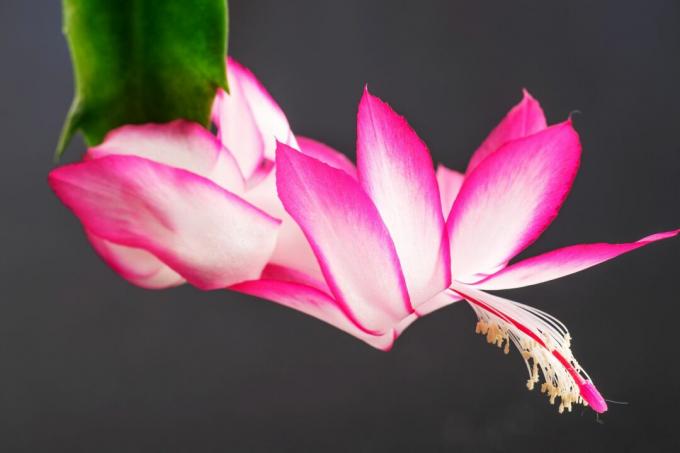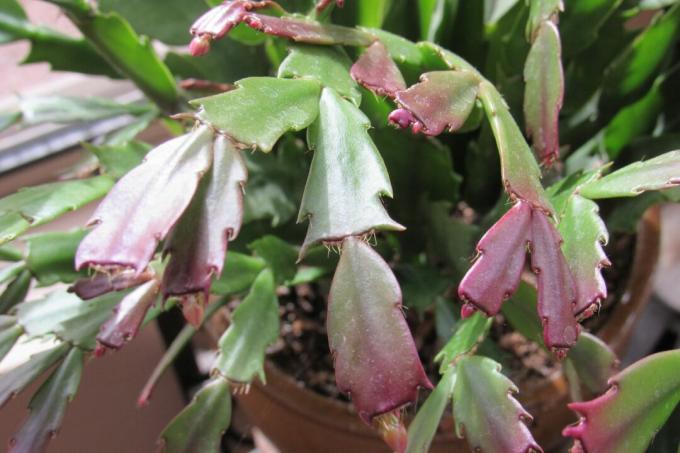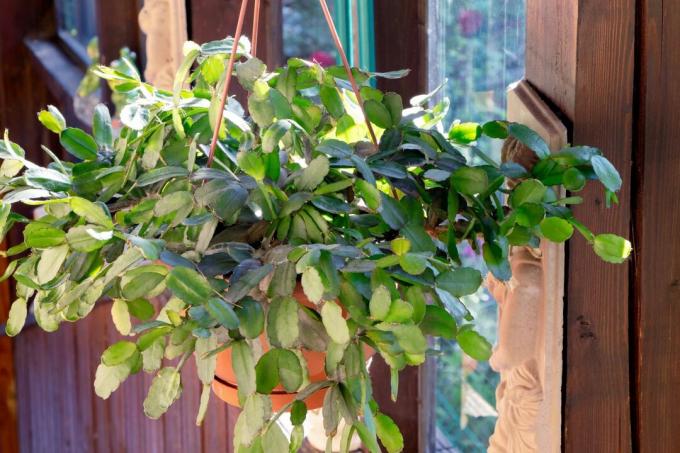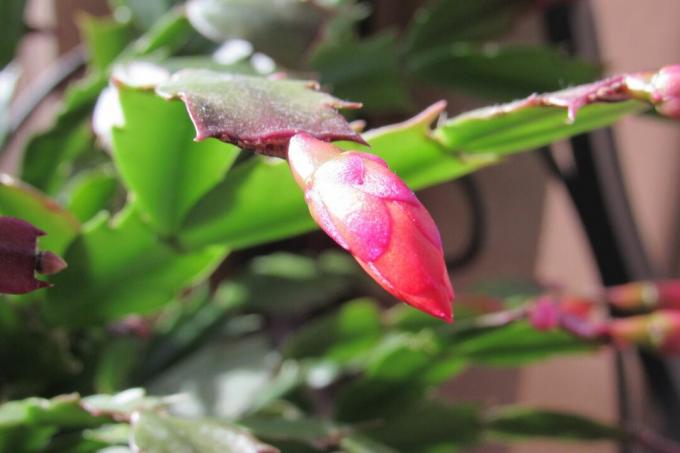The Christmas cactus brings color to winter with its flowers. But how can you make it bloom successfully?

In the first year you buy the Christmas cactus (Schlumbergera x buckleyi) with numerous flower buds. However, the cactus plant also blooms (Cactaceae) is not permanent and loses its flowering power as the days get longer. However, this does not mean that the Christmas cactus has to give way. It can be brought through the summer easily and without great effort and bloom again in the winter. First of all, of course, the right care up to winter is the be-all and end-all. Ultimately, however, the interplay between the right temperature and the right lighting conditions is also the decisive factor in making the Christmas cactus bloom successfully.
contents
- Christmas cactus: proper care in summer
- Christmas cactus: factors that affect flowering
- Christmas cactus won't bloom or drop the flowers
Christmas cactus: proper care in summer
After flowering is before flowering - this is also the case with the perennial Christmas cactus. After flowering, the Christmas cactus allows itself a little rest. The watering should be reduced and fertilization should continue to be suspended during the entire flowering period. If the Christmas cactus is to be given a larger pot, now is the right time to repot. After all, the Christmas cactus will usher in the new growing season with the new shoot. Watering must be increased and fertilization (about every four weeks with a complete nutrient fertilizer) must be resumed.

If there is no more threat of frost, the winter cactus can also spend the summer outdoors. It feels most comfortable in a partially shaded location, as it does not tolerate direct sunlight so well. The Christmas cactus spends the summer happily outdoors. However, it is not worth planting out, because at temperatures below 10 ° C it will have to move back into the house anyway. In general, the following applies to the optimal care of the Christmas cactus in summer:
- After flowering, dormancy is a good time to repot
- With new shoots, increase irrigation as required and restart fertilization (every 4 weeks with full nutrient fertilizer)
- As soon as the temperatures allow it, the Christmas cactus can move outside for the summer (preferably no colder than 10 ° C)
- Partially shaded location - the Christmas cactus cannot tolerate full sun
- Do not plant out the Christmas cactus
- As soon as the temperatures drop, he has to move back into the house

Christmas cactus: factors that affect flowering
As soon as the Christmas cactus moves into the house due to the falling temperatures, the crucial phase in preparation for flowering begins slowly. The factors and day length play a decisive role here. Watering should be reduced significantly from October. Slightly cooler temperatures around 15 ° C favor the development of the desired flowers.
In addition, the Christmas cactus is a so-called short-day plant. It is best if the plant experiences a maximum day length of 9 hours for at least four weeks. So you have the choice of whether to place the cactus in a room where there is no interfering light for too long days or whether it is always darkened. This works, for example, by putting a cardboard box over the plant on the windowsill and guaranteed that no light shines through.

If the temperature is too cool (around 10 ° C), the length of the day no longer plays a role in the formation of flowers, but then in general the formation of the buds is more difficult. Temperatures above 22 ° C completely prevent flower formation. When the flower buds begin to develop, the Christmas cactus can also move to a lighter and warmer location. This accelerates the further development of the flowers. In general, the flowering of the Christmas cactus can be specifically influenced by the following factors:
- Interaction between temperature and length of day determines the formation of flowers
- From October resting phase with lower temperatures, significantly reduced watering and shortened day length in order to promote flower formation

- Temperatures around 10 ° C: difficult flower formation regardless of the length of the day
- Temperatures above 22 ° C: flower formation usually prevented
- OPTIMAL: Temperatures around 15 ° C and short days (maximum day length of 9 hours)
- Darken, for example, with cardboard on the windowsill or make sure that no light sources provide more than 9 hours of light

- As soon as the flower buds develop: a lighter location and optimal temperatures of around 20 ° C promote further development
- Adjust watering to requirements
Christmas cactus won't bloom or drop the flowers
Errors can therefore occur with some factors that can prevent the Christmas cactus from blooming. That's why we look again from the other point of view and count what can have gone wrong when the Christmas cactus simply does not want to develop flower buds:
- Ambient temperature too high (over 22 ° C)
- Ambient temperature too low (around 10 ° C)
- No short day conditions of a maximum of 9 hours of daylight à not darkened or interfering light
- Stress due to incorrect watering: watering too much and maybe even causing waterlogging

When the Christmas cactus has developed its flowers, that does not mean that it will develop its full flowering power. It is in a very sensitive phase and if certain factors are not optimal, it can simply shed its developed flower buds. The following causes can be responsible for the fall of the Christmas cactus buds:
- Too little light after the flower buds have developed
- Temperatures that are too cool after the flower buds have been planted - at least 15 ° C is recommended
- Too generous watering that leads to waterlogging
- Insufficient watering and drought
So that your Christmas cactus blooms reliably, we have our best for you Tips for caring for Christmas cactus compiled.



